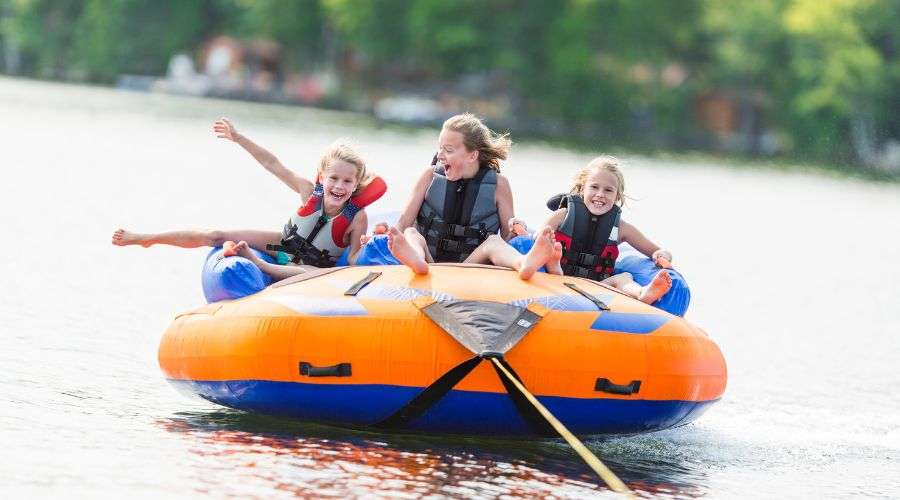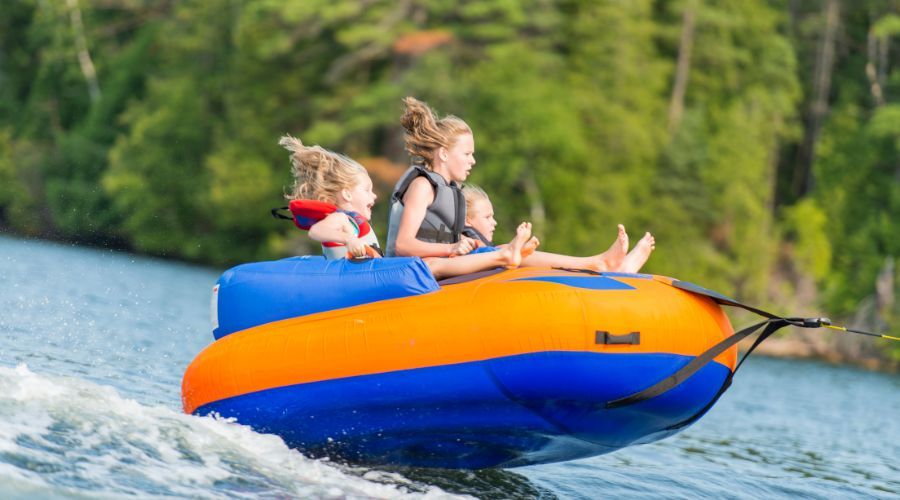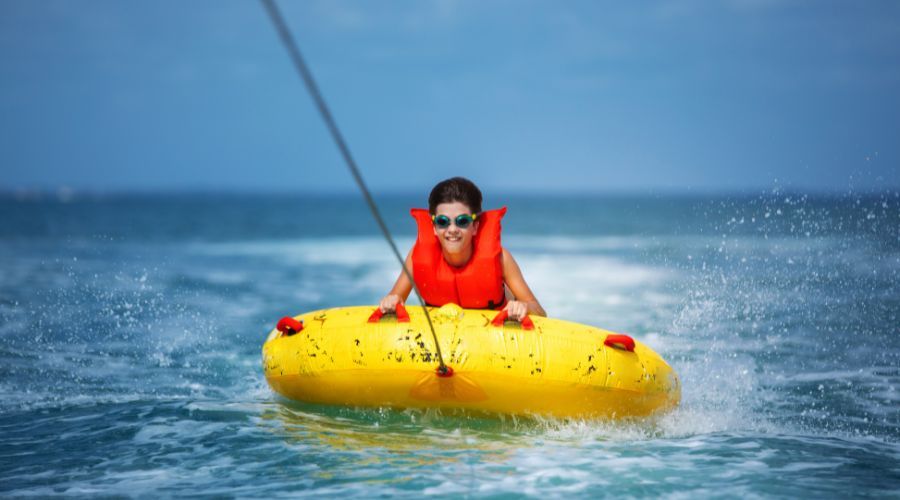
Everyone wants to be outside on their boats, enjoying the sun and having fun on the water as the weather begins to warm up. Tubing is one of the most well-liked water sports that people engage in, whether they want to spend time on a lake, river, or ocean. If this is your first time towing a tube, you undoubtedly have a lot of questions about how to pick the best tube and tow line. To find out how to choose the best towable tube, keep reading.
The number of riders is the first thing you should think about while choosing a tube. There are tubes available for single cyclists as well as groups of riders. All of the tubes available are certified for adults, so if you want to tube with kids, you should also keep that in mind while selecting a tube. You should generally stick with a 1- or 2-person towable tube if your boat doesn't have much room. Compared to multi-person tubes, they often tend to be lighter and more portable. Larger tubes that can accommodate more riders should be taken into consideration if you want to haul a significant number of passengers.

It's crucial to only tow as many people as the tube and tow line are rated to handle. It might easily turn dangerous if you add more individuals than the manufacturer advises. There are only a certain number of handles on each tube, and if you exceed the weight restriction, your tube can be damaged, putting your riders in danger.
Consider the design of the tube after you are aware of the approximate number of individuals you will often be towing. When deciding which design to purchase, keep in mind that each style of the tube can accommodate riders of different skill levels, ages, and speeds.
When it comes to inflated tubes, open-top tubes are the ubiquitous donut form. This style is adaptable and perfect for riders of all ages and abilities. Open top tubes may be ridden in a variety of ways. You may lay on your stomach in the hole with your feet dangling over the back or you can sit in it with your legs hanging over the side.
A deck tube can be the best option if you want a tube that can handle a swift ride. It would help if you had a firm grip to keep on these tubes when you're out on the water. Laying on your stomach with your back to the boat is the most common position when riding a deck tube.
The best tubes for a leisurely ride are ride-in tubes, sometimes referred to as cockpit-type tubes. The fact that riders sit low in the tube makes them ideal for smaller kids as well. Compared to previous tube designs, the design produces a smooth takeoff and a safer ride.
Dual tow point tubes feature two tow points on each side of the tube, as you can obviously assume from the name. Due to the fact that riders in this design are sitting at the front and have a backrest, it is popular with people of all ages. Additionally, you may rotate the tube to create a "chariot-style" riding experience.
Toboggan-style tubes, also known as banana tubes, are made to be used like a sled in the snow. These tubes have a sleek, aerodynamic form that makes them perfect for pontoon boats.
Rocker tubes feature a curved surface to provide a distinctive feeling on the water. Riders may move their weight from side to side to produce a rocking motion, which increases maneuverability. The majority of these tubes are three-stage or U-shaped. While U-shaped rockers have a continuous curve so riders may rock side to side, three-stage rockers have winged tips and a flat center portion so riders can lie down or sit up. Although novices and young children may still enjoy rockers, provided boat drivers avoid more incredible speeds, this form of towable tube is best for adrenaline seekers.

Because riders desire a thrilling new experience when they're out on the water, towable tube designs are growing increasingly distinctive. These tubes are made to fulfill the needs of experienced riders and come in a range of forms and odd styles.
For safety and tube integrity, it's crucial to properly inflate your towable tubes. Until the tube is firm and the cover is wrinkle-free, they should be filled with air. Check the manufacturer's suggestions for appropriate inflation methods to be extra careful.
Each tube includes a valve that allows air to be inserted into it. There are three main categories of valves, including:
• The Boston valves
These are two-cap one-way valves. To inflate the tube, remove the cap; to deflate it, untwist the whole valve.
• Speed valves
Utilizing this valve is simple. All you have to do is inflate the tube using an electric pump and a speed valve fitting that has been inserted into the valve.
• A stem valves
The simplest valves to operate are stem valves. To inflate, insert the electric pump deeply into the stem valve; to deflate, clamp the valve and apply pressure to the tube.
Be mindful that the scorching sun and chilly water conditions might cause inflation levels to vary. When not in use, you should deflate, fold, and store your towable tube in a place where it won't be exposed to sunlight or be pierced.
You need the proper tow rope in order to pull any towable tube. According to WISA standards, tube ropes must be at least 50 feet long and may not be more than 65 feet. If your tow line is less than 50 feet, the tube can get caught in the wake's crest and spray riders in the face; if it is longer than 65 feet, whipping might result.
It would help if you also thought about the tow rope's strength in addition to its length. Depending on how many people you are towing, the lowest rope strength should be about 2,000 lbs. and the greatest rope strength should be around 6,000 lbs.
Never utilize a tow rope intended for tubing instead of another use. Because they are not made to handle as much weight as a tubing tow rope or to be as robust as these ropes, you cannot use a tow rope made for water skiing, wakeboarding, or knee boarding. You shouldn't use your tow rope on the water if it has knots, is frayed, or has sun damage.
